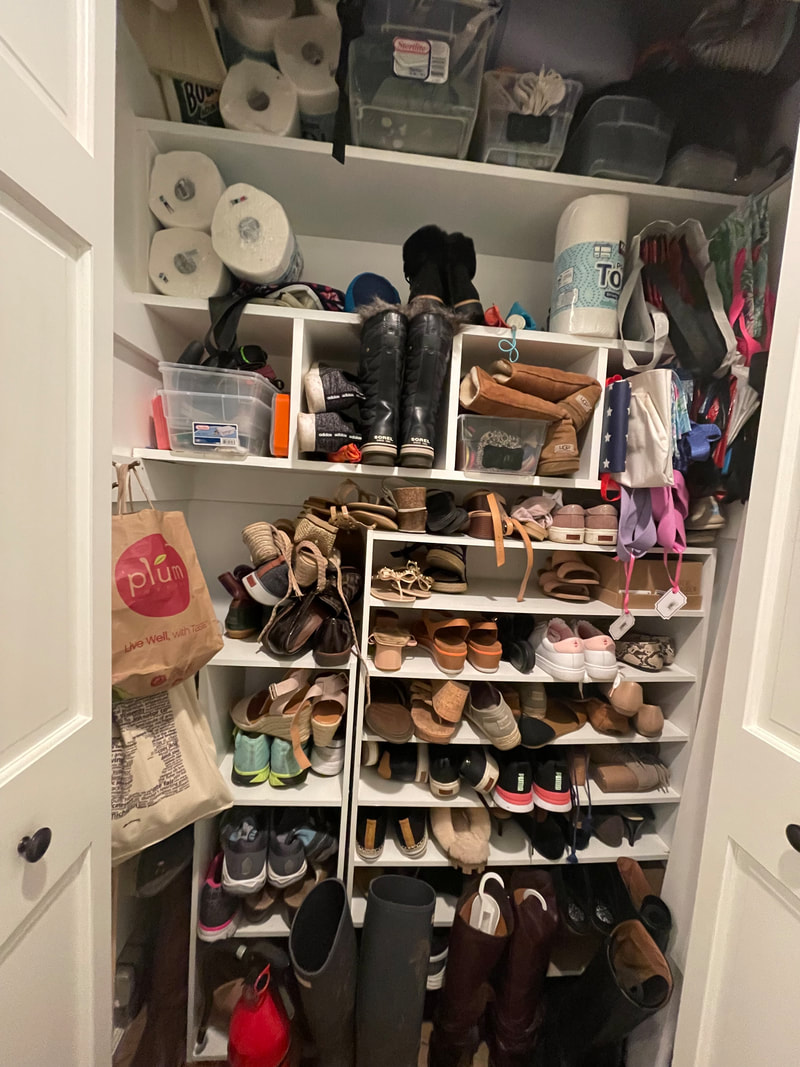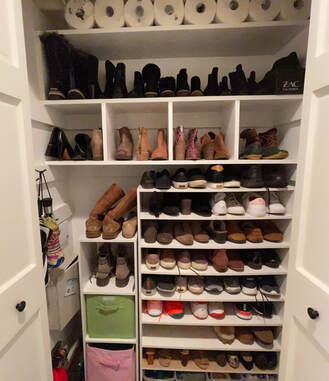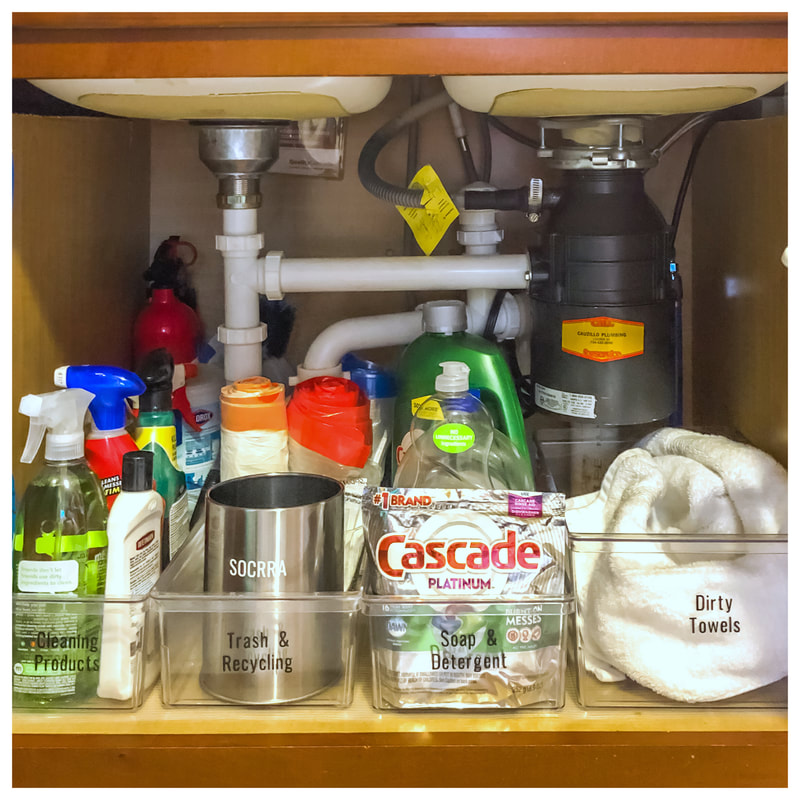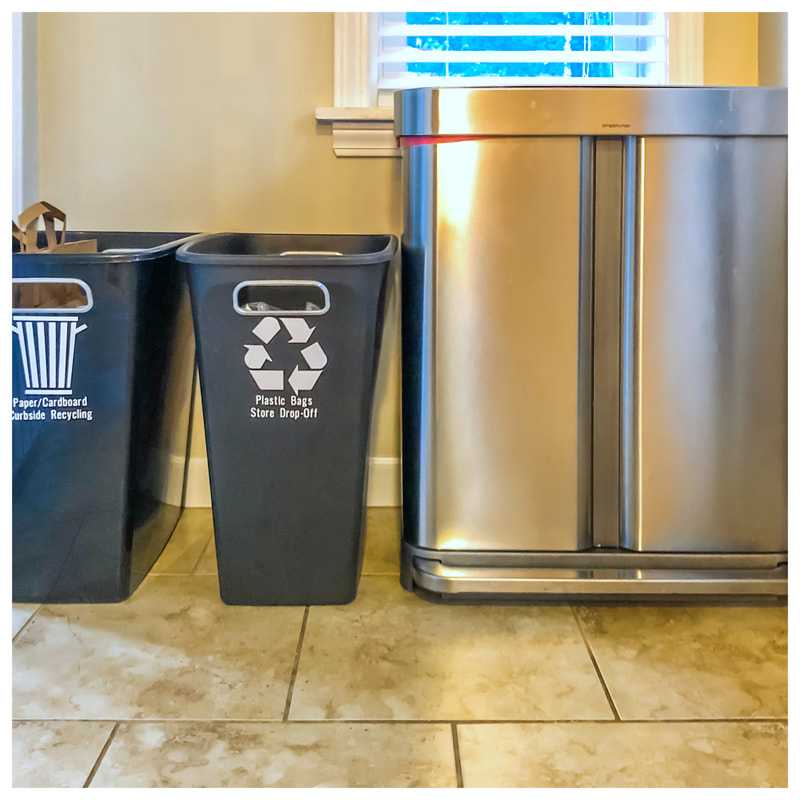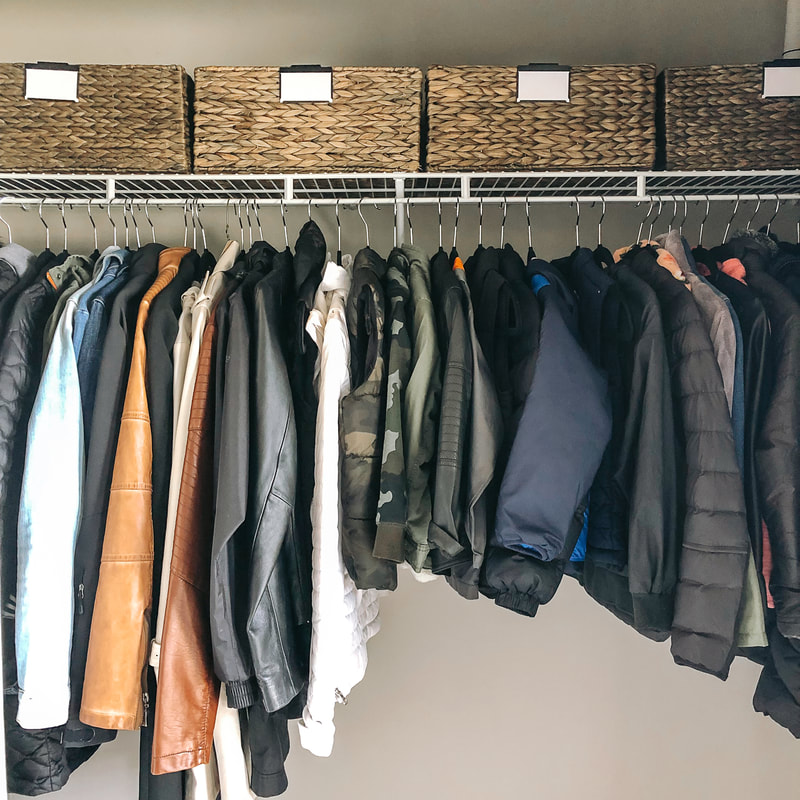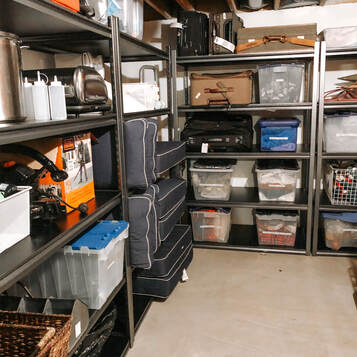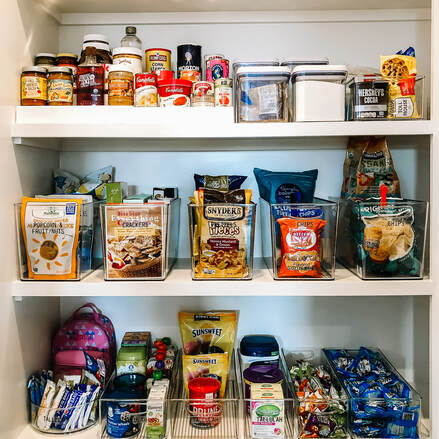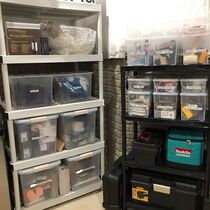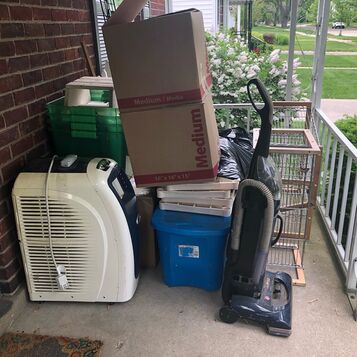|
A year end relfection... Take time to reflect on the past year and all of the accomplishments that you have made. If you didn't start the things you set out to accomplish at the beginning of 2021, you would never have achieved the success you did! Did you set goals and intentions for yourself last year? When I look at the last few years, I am honestly in disbelief of what I have accomplished. My 2019 Story In 2019, I left the corporate world and started Utterly Uncluttered. I made a simple business plan, taught myself how to find clients, got insurance, learned that using QuickBooks was much better than using Excel to manage my books (the cost is well worth it), marketed myself on social media, regularly attended networking events, and navigated managing hundreds of work/personal tasks I had acquired. I heavily relied on family, friends, clients, friends-of-friends, and podcasts for support and help. I was even featured on the local news and radio several times, which was SO exciting, especially during my first year in business. I picked up a side job as a fitness instructor job at a local gym to make some extra money (maybe you came and worked out with me)! For a period of time I would wake up Thursday mornings at 4:30 am so I could shower and teach a 5:30am class then go to work for a full day organizing afterwards. It was a busy and humbling year filled with lots of change. 2019 Takeaway Trying and failing at new things is not easy. It can be downright discouraging; however, I was driven by knowing that I was helping others and making a positive change in their lives. Seeing the "before and after" progress of the work I did was so satisfying, and when clients express the weight they feel lifted off their shoulders - it makes all the hard work worth it. My 2020 Story In 2020, faced with the pandemic, I was forced to figure out how to pivot and just keep going. March was filled with many sleepless nights. Would my business run out of cash before I was able to go back to working in homes? I had worked so hard and I felt scared and unsure of what was going to come next. I started organizing virtually more often, which was a drastically different experience than working in homes. Though it was different, it was really amazing to see the progress my virtual clients were able to make with a plan and my guidance. During this time period, I also began hosting more online organizing workshops. I made time to understand how my business finances work, and our financial advisor recommended I read the book "Profit First" by Mike Michalowicz. I read it, and I would read it again. If you own your own business, I highly recommend you look it up and read it, too. I have never read a book that I felt impacted my financial knowledge and security as much as this one did, and it empowered me to feel in control of my business. 2020 Takeaway 2020 threw us all NOTHING BUT CURVEBALLS. If I can take one big lesson away from 2020, it's that being in good health, both mentally and physically, is not something that should ever be taken for granted. My 2021 Story In 2021, my husband and I found out we would be having our first child in early 2022, and that our sweet pup Peaches would soon be a big sister to a baby boy! Through all of the excitement, panic ensued when I came to the realization that I couldn’t continue working at the same speed I had been for the past 2 years, all by myself. This is the only picture that exists of the 3 of us, though my camera roll is filled with about 1,000 photos of just her, of course.
Anyways, I digress. There simply aren't enough hours in the day to do it all, how was I going to get everything done? There is a certain culture that is present in entrepreneurship/business ownership/whatever you want to call it that encourages you to hustle non-stop. That might work for some people, but if I wanted to run a successful business and also be a present partner to my husband and mother to my child, there was with 100% certainty no way I, personally, could continue going at the speed that I have been. I was already stretched thin. Most days, I work until I go to bed in order to simply get everything done, and because I work so late, I often have insomnia and give up on sleeping around 4am; so I will get up and keep working to "put my mind at ease." It's not sustainable. I needed to figure out how to keep my business going, despite the inevitable physical, emotional and life-changes that were coming. After working through procrastination and accepting everything that I knew needed to be accomplished over the next year, I created trainings and processes, hired my first employees, navigated the pain-staking world of HR/Payroll, and continued wearing all the hats, but ultimately learned how to give up some control and ask other people for help. I now have 2 employees and am in the process of hiring more. It's the best decision I ever could have made for myself and my business, and I was SO scared to do it. I would likely have never accomplished all of these things without the motivation of “limited-time” ahead of me. My desire to be a present wife, mother, daughter, friend, and now boss, are my WHY for accomplishing my goals in 2021, 2022 and beyond. 2021 Takeaway I tell you all of this because I think many of us spend a lot of time and effort focusing on frilly goals that aren't really important in the grand scheme of our lives. Those goals often fail because the busyness of our lives takes over, and we don't have a true reason to stay motivated all year, after the initial thrill of "new years resolutions" wears off. If you envision your life three, six, twelve months from today, where do you see yourself? Who is surrounding you? What are you doing? How will you get there? Write it down, work backwards, and then set your intentions & goals. What is your “why” going into 2022? - Kara
0 Comments
New Year, New You: Prepping for a New Year, unloading holiday gifts, and putting away holiday decorations.
It’s time for a New Year and a New You! Organizing your home is a great way to start the New Year out on the right foot and it is work worth doing. The best way to prep for a New Year is to start by sorting and purging unwanted items from your home. Work through each room throughout your home to get the space you’ve dreamt of. Not sure where to begin? Ask yourself this: What room is causing you the most stress on a day-to-day basis or which area are you the least likely to tackle on your own? Whichever space in your home you thought of first is where you should begin. From there, work on the room next door to it until that entire floor of the house is organized then move on to the next floor, working through each level to get Utterly Uncluttered. Now, how to do it! Prepping for the New Year, unloading holiday gifts, and putting away holiday decorations can all be accomplished through this 3 Phase Process. It’s repeatable and the same way you’ll maintain the space too. Phase 1: Sort & Purge You’ll be making a lot of decisions in this phase and you’ll want to remember to keep only what you Need, Use, or Love. Start on the floor of the room you’re working in closest to the door. Work your way around the room going one item at a time deciding what to keep and what to get rid of until the floor is clear. The things you want to keep you’ll need to decide do they belong in this room or another room in the house. If you stay in this room sort it like-with-like (so, by category), and if you move to another room in the house, create a redistribution container to put that stuff away later. I recommend having a redistribution container for each floor of your home. If it's full of items that you want to get rid of, decide to donate, recycle, throw away or give to someone you know (but only if they want it!). Create a container for each category. Decide where the donations are headed and schedule yourself to drop them off. Once the floor is clear, go through everything around the perimeter of the room and then anything in the center of the room (an island in the kitchen, a desk in an office, etc). Empty every drawer, every cabinet, every nook, and cranny. Make a decision on each item sorting the things you’re keeping, like-with-like as you go. You may also come across things you want to keep but that involves an errand, for example, dry cleaning. You’ll create a container for that as well as calendaring yourself to take care of it. After "Phase 1" is complete every item should have been touched and had a decision made. Sometimes it’s helpful to sort the items into a nearby hallway or room, other times it makes sense to sort within the room, it just depends on the space. Phase 2: Reorganization Once everything is sorted and purged this is where you put the space back together again. You will want to organize like items together, so all pens together, all pencils together, for example. The frequency of use will also determine where items belong. Use something daily? It needs to be in an easy-to-grab location. Use it once a month? Can go in a harder-to-reach spot in a cabinet. If a space in the room doesn’t hold all of one category you’ll want to regroup and either purge more or choose a different location in the room for that category. Remember, if the space is maxed out it’s time to get rid of more. Categorizing often takes up more space than just cramming stuff together in a disorganized fashion does so be diligent about keeping only what you Need, Use, or Love. If you do this in an honest way you just might end up with "empty" space, what a gift! Remember to bring in the new gifts you’ve received this holiday season. Putting away holiday décor should happen in your basement storage room so it’s key to make sure the space is organized so you can put them away. Phase 3: The Walk-Through This is when you show everyone in your family where everything ended up. A lot of people complain that their families don’t put things away but also haven’t taken the time to show them where things go. Be clear and logical as you explain why things are where they are (like-with-like, frequency of use, volume, and size) to help the system stick in their memories. Now it’s time to label! This is a must for any space, especially one being used by more than one person. Avoid using "miscellaneous" and "assorted" as labels and categories as much as possible. Get specific and make sure you’ve categorized when you were sorting, purging, and reorganizing. By doing this 3-Phase process in every room and closet in your home you’ll be Utterly Uncluttered and will achieve a New You this New Year. Imagine your space as a blank slate just waiting to have exactly what you Need, Use or Love in it. It is worth doing at the start of the year so you can head into the following months organized, clutter-free, and with the peace of mind that you know exactly what’s in your home. Having new gifts to unload can be daunting but the key to enjoying the gifts is that we must have a good home for them. You’ll thank yourself next holiday season for putting away the holiday decorations in this fashion too. When in doubt, dig deep and be honest with yourself about whether or not the item you’re stuck on is truly benefiting your life. If you have room for a thousand pairs of shoes then keep a thousand, but if you only have room for 10 pairs then keep 10. The space we have determines the amount of stuff we can keep. As you journey into this New Year, remember to be Utterly Uncluttered every step of the way! Cheers to the New Year and the New You! Melissa Fortino Before purchasing a gift for someone this holiday season, ask yourself this very important question:
"Does this gift add value to the receiver’s life or will it be clutter they can’t discard because they feel guilty?" Gifts are tough for people to let go of. The guilt of letting go of something a loved one has given you is real. People feel as though they’ll hurt that person’s feelings, they’re letting go of the person, not the thing, or that it will cause an argument. This was not the original intention of the gift being given but too often is the result. Don’t let your gifts become clutter, and start making the gift-giving about the recipient, not the giver. Here’s how: Ask Questions: Before you go shopping ask each person the following questions: What’s on your wish list? What don’t you want more of? This allows them to give you suggestions they’d love to get and things that they are just overwhelmed by. This doesn’t take all of the fun out of surprising the person. They might say "candles are something I’d love to get, but home décor isn’t something I need." Now you get to surprise them with their favorite brand and scent of candle they love. Or if they give you 2 to 3 ideas, they won’t know which one you’re going to pick. If the person isn’t sure what to suggest ask them, what do you Need, Use, or Love? This usually gets them thinking in a more specific way. If they say they don’t need anything respect that. People don’t always need a physical gift to know you love them. Respect: Respect the person’s answers. Don’t disregard what they request or try to talk them into something. If they don’t want anything then you can give them the gift of time together doing something you both enjoy like going to a movie, a weekend where you do an Aunt weekend with your nieces and nephews (a twofold gift, one for the kids & one for the parents), or even a gift card to a nice restaurant you know they love. Memberships to museums, money for grad school or to put toward a vacation are all excellent gifts that respect the “I don’t need anything response.” Give Gift Receipts: Whenever possible give a gift receipt with every gift purchased. When they open the gift point out the gift receipt and tell them that if they want to return or exchange it to do so guilt-free, you’d rather see them with something they love than to put your gift in the back of a closet never to see the light of day until a Professional Organizer shows up. Start Early: Start your holiday shopping early so you’re not stressed about finding everything on people’s wish lists. If you’re rushing to buy gifts you will likely be less thoughtful about what you’re buying and instead just buying stuff to have something to give. Be intentional, start early and give yourself enough time to shop thoughtfully and with love. Take Notes: Make notes of what you bought for each person so that you know the following years what you got them. Make note throughout the year of ideas you come up with based on conversations you have with the person and things they mention – these notes come in super handy when asking for a wish list as you can suggest some items to them to see if they’re interested. Make note of what they don’t like as well, it narrows down the list for the next time you make a purchase. My favorite way to make these notes and lists is in my Notes app on my phone. That way it’s always with me when I’m shopping. Don’t Take it Personally: If you don’t see your gift in the person’s house after you’ve given it don’t take it personally. Remember, gift-giving isn’t about the giver it’s about the receiver. If that person is overwhelmed with clutter or changes their mind later about a gift it isn’t about you, it’s about their well-being. The stress caused by clutter is real and you wouldn’t want your gift to cause stress, would you? These are the best ways to make sure your gifts don’t turn into clutter: ask questions, respect the answers, give gift receipts, take notes, and don’t take it personally. Enjoy the time spent with loved ones above all else and remember, the holiday season isn’t about the stuff it’s about the people! Here’s to making memories and warm moments. Shop with love, Melissa Fortino Take the time this holiday season to get rid of the things holding you back from being the best YOU! How are you feeling about yourself this holiday season? Are you feeling a little stressed, low energy, even lethargic? It might be time to make your whole home Utterly Uncluttered to free up space for your best you both physically and mentally. The holiday season can be stressful, with full schedules, maxed out budgets, and new stuff coming in. There’s never a better time to let go of unwanted items in your home to make more space for the things you need, love and use. But why take the time to do it now? You’ve been putting things off all year, deciding that you’ll “do it later” or you’ll have more time “later.” Well, it’s December and later is now. It's time to make time so you end up with more time in the long run. That’s right, an organized space will actually give you more time. You’ll be able to find what you need when you need it. Most Americans spend 2.5 days per year looking for lost items in their homes and offices according to the The Pixie "Lost & Found" survey. Throughout your life, that adds up to a lot of days lost to stuff you can’t find. In addition, when you can find what you already own, you spend less money and time. Americans spend $2.7 billion each year replacing misplaced items. That’s time and money shopping for new things. An organized space can save you up to 40% of the time it takes to clean a disorganized space. Imagine getting through your holiday cleaning for guests in less time or not having to clean for the cleaning service to come over! Later is now.
I’ve heard it over and over again. “I’ve lost weight since I started organizing,” “I want to cook more now that my kitchen is organized,” or “This has changed my life/marriage/career/kids.” That’s the power of organizing. That’s the best version of you that's waiting to be uncluttered and freed from things weighing you down. Have you ever looked at an item and not even known where it came from in your home? Have you ever come across trash in places you thought you didn’t have trash? Have you ever found something that brings up a bad memory? I've watched countless clients go through things and have these instances happen.
These are ordinary people, busy with life, who have simply lost track of what items are in their homes. The stress melts away as they purge these items from their life. It’s truly the greatest gift to watch this transformation person after person. You can experience it too. Just start with one item in one room, and begin. Your best you will be Utterly Uncluttered in no time. We believe in you! Here’s to making time for YOU this holiday season! Melissa Fortino Now that the holiday sales have come and gone, here’s how to make space for those new finds:
We all love a good deal, but we’re often unsure where all the new purchases will go. Now that Black Friday, Small Business Saturday & Cyber Monday have come & gone, it’s time to make space for the deals you got for yourself. Here’s how you do it: Step 1: Think about where you’ll most often use the item. Some things are going to be easy, like an air fryer. You want to keep that in your kitchen for optimal use. Some things will be a bit trickier, like keeping a back stock of holiday candles. Those could end up in several spaces, from a linen closet to a basement storage room. To decide on the best place for them, think about Step 2. Step 2: Identify how often you’re going to use the item. Is it an everyday use item? Weekly or monthly? Once a quarter? Yearly? Things you use once a quarter or less make the most sense to organize in a basement storage room. Things you use daily (like a coffee maker) make sense on the kitchen counter. Items you use weekly or monthly go into secondary storage in the main living space. Step 3: Make sure the space you’ve picked is also where other like items live. You want to organize like with like from your basement to your attic. So for the air fryer, make sure it’s with other small appliances like a small appliance garage/cabinet in your kitchen. That holiday candle back stock? They should live where other holiday items are stored, like the basement storage room. Step 4: Go to the storage space you’ve identified as the best-suited home for your new item. We’ll use a kitchen cabinet for a weekly/monthly item as an example. Is there space in that cabinet to store the new item with similar items? If there is, wonderful! Place the item in its new home, and you’re on your way! But if there isn’t, move on to step 5. Step 5: Sort and purge the cabinet/space. To make room in a space, you’ll want to start by sorting and purging, meaning you’ll go one item at a time and figure out if you need, love, or use that item. If you don’t, it’s time to donate/recycle/throw away the item. If you do, it’s a keeper and it’s time to figure out if this space makes the most sense for it. Finding stuff for the laundry room in the kitchen cabinet? Redistribute these items to the laundry room. As you purge, sort the remaining items you’re keeping in the cabinet like with like. Pulling everything out as you go will give you a blank slate to work with. In the end, this will give you an idea of the total volume you have of each type of item. You may purge some more once you see that you have multiples of an item with some being in better shape than others. Step 6: Reorganize the cabinet. Now that you are left with only the items that you need, love, or use for this cabinet, PLUS the new item, you can see what you’re working with. Reload the cabinet putting items you use less frequently toward the back and items you use most often toward the front, for example. Make sure you’re reloading like with like. If you can’t organize and keep the like items together this may not be the best cabinet for this category and you’re organizing may have to spill over into another cabinet. That’s the domino effect of organizing and the domino effect of bringing those holiday deals into your home! It’s okay to be led to the next space naturally this way, but don’t let it overwhelm you. It’s better to dig in and take the time to do it right than to shove the new purchase into a cabinet all willy-nilly. Following these six steps will keep your home tidy as you put away your new bargain treasures. Don’t let the holiday sales turn your house upside down, and stay Utterly Uncluttered in the process! Merry Organizing, Melissa Fortino Recycling: you know how important it is, but you're not sure how to do it "right." If this sounds like you, you likely fall into one of three buckets:
I feel so inspired by many of my clients' dedication and desire to recycle properly of the items they're discarding, and I feel like I have a responsibility to educate myself on the topic so I can do better myself and for you. In the past 48 hours, I have done a few things:
The kitchen is where I notice the majority of our recyclable waste tends to collect, and it is a central location in our house. For that reason, the items we most frequently dispose of need zones IN THE AREA THEY ACCUMULATE. Let me say it another way: convenience is ESSENTIAL for consistency!
I anticipate the small tin I have designated for Batteries/Other Recyclables under the sink to fill up rather quickly, so I set up several larger bins in the basement to collect and separate items that eventually need to go to a recycling facility. My goal is to do a quarterly drop-off, or as necessary. With these bins, I will be able to keep items sorted by type (ex. batteries, paint, electronics, household cleaners).
I felt compelled to share this information because I imagine that, like myself, many people WANT to recycle, know the importance of it, yet lack the foundational knowledge and a system to do it properly. Always remember that learning is continuous and it is never too late to start a good habit. I hope this system helps set you up for success to recycle with confidence and pride! How Prioritization & Trello Can Help You Accomplish Your Goals
Life is filled with many things we don’t want to do, but we do them anyways.
Studying for a test, putting together a presentation, public speaking, making important decisions; these are all things that require preparation and have consequences if not done well. They are also things I tend to procrastinate. When I was in fifth grade, my dad gave me the advice to study a little bit every day, so I wouldn’t have to stress and cram before a test. No matter HOW HARD I TRIED over the years, I couldn’t get myself to do this. 20 years later, I still think about this advice. It sounded simple, but with a due date so far in the future, I always waited until the last minute. When I couldn’t procrastinate any longer, my brain would go into hyper-focused mode and I would always get things done. I wasted a lot of time overthinking and stressing, rather than actually doing. For the majority of my life, I assumed I operated “better under pressure” and identified myself as a procrastinator. Something about that didn’t feel right, because I am also a planner and list-maker. A few months ago, I started thinking about this topic, in-depth. I started reading articles and listening to podcasts and audio books, and quickly noticed a trend: procrastination often goes hand-in-hand with perfectionism. MIND. BLOWN. Maybe you already knew this, but for me, it was like a lightbulb went off in my head. The things I had been procrastinating my ENTIRE LIFE had negative consequences if they weren’t done well, and therefore, I was putting off doing them because I subconsciously knew the amount of time and energy I would have to put into them to gain a PERFECT result. I would overthink, over-prepare by making lists and planning out a schedule, and would attempt to line everything up “just right” before actually starting - but what I was actually doing was procrastinating. By the time I needed to take action, there was no TIME to overthink, I just had to DO.
If you complete that task, not only does it feel good when your biggest task is done for the day, but you will gain more momentum to get the rest of your tasks and goals accomplished!
I’m sure you’ve heard that “a goal without a plan is just a wish.” Thank you Antoine de Saint-Exupéry for this wonderfully accurate quote! Having a plan will give you peace of mind, a sense of structure and stability, and direction, even during uncertain times like the present. Since my job as a professional organizer is primarily done working inside clients’ homes, I have had to make a massive pivot in what I’m focusing on and where I spend my time. Over the past year, Trello has been the single best tool I’ve found to help me manage that. It completely has replaced my paper planner, random to-do lists and functions alongside the calendar on my phone!
Trello is an excellent tool for business owners, but is also an amazing tool for managing your LIFE, even if you’re not!
I operate off of several Trello boards, but have one board in particular that I call my Life-Management Board. On this board, I include every task relating to my personal and work life that I need to accomplish so I can see it all in one place. You can add due dates, checklists, notes, links, and pictures to your boards, prioritize and categorize them as needed, and keep track of everything from your computer or phone. I have also used Trello to plan trips, study, organize social media content, create shopping lists, to-do lists, and manage projects. Overall, I use it to maintain structure in my days to make sure I’m accomplishing everything I need to. I want to provide a few basic Trello functions to get you started, because over the past year it has become the most essential tool that I use to keep my life organized (and as a bonus, it's FREE!) Once you create an account you will:
I created a life management board template HERE that you can save to your own account to get you off to a good start. To save this template so you can use it, select the button at the top that says “Create Board from Template,” select your settings, and Create. Once you’ve done those steps, the template is ready for you to use! My hope is that this wonderful tool can help you the same way it helped me. With all of my “thoughts, tasks, and reminders” living in one place, I spend significantly less time wondering what I have to do, searching for lists, and second guessing due dates. The drag and drop feature helps me adjust my priorities into a timeline so I can time-block and move my “frogs” earlier in the day, serving as a reminder for me to get those done FIRST. If you use Trello, I'd love to hear about how you like to use it, too! Don't Forget To Tidy Up Before Listing Your Home!
Decluttering & Organizing is one of the most important factors that should be taken into consideration when preparing your house for sale! The tidiness of your home greatly influences potential buyers’ perception of the space and can have a major impact on their decision-making.
Some important spaces potential buyers will be paying attention to are your:
Here are some actions you can take to prepare your home for sale and present it in the best possible light!
Depersonalize
Rent a Storage Unit (if necessary)
6 Benefits of Properly Managing Your Food During Quarantine + Beyond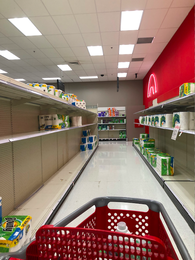
On March 12th, at 7:45 AM, as I briskly walked through Target down the bare aisles of where paper towel and pasta were supposed to be, it hit me that what we were about to go through was going to have a significant impact on our lives. Forty-five minutes later, panic had begun to set in.
Thoughts of "how long will this shopping trip be able to sustain us for if we can't leave to get more food?" followed by "how much is this going to cost, where will I put it all, and how do I make sure we don't waste any of it?" flooded my mind. I imagine many people experienced similar thoughts the first time (if not the first few times) they went to the store at the start of this pandemic. Many people are facing these roadblocks:
How does one combat these issues? Creating a plan and managing pantry and fridge organization, similar to how you would organize your closet, is essential. By following these six steps, you can develop sustainable habits that will extend beyond quarantine, and it will save you time and money in the long-run. The 6 Steps:
To assist with this, I have compiled a few of my favorite resources to help with extending the life of your produce and prioritize what you need to eat first to reduce waste:
I am also attaching 2 FREE printable downloads to help with your weekly meal planning and grocery shopping! What is your biggest challenge when trying to keep your pantry and refrigerator under control?
The phrase "there aren't enough hours in a day" generally rings true during the usual hustle-and-bustle of our busy lives. Right now, however, during the COVID-19 outbreak, we are in a unique situation. We are staying at home more than usual due to self-quarantining in an attempt to keep healthy and flatten the curve.
This situation poses the question: "What should I do if I have some extra time at home?"
Hours of sunlight are getting longer, and we are spending more time at home than usual! What better time than NOW to jumpstart spring cleaning & decluttering and get a fresh start!
Spring Cleaning & Decluttering is HEALTHY!
Spring cleaning & decluttering is therapeutic! Several health benefits come along with going through your house and clearing your clutter:
Not sure where to start? Here are some tips:
What is the first area in your home that you want to tackle & declutter this spring?
|
Utterly UnclutteredHelping feed your urge to purge clutter from your life! DISCLOSURE: My blog posts may contain affiliate links. This means that I earn a commission from qualifying purchases should you decide to make a purchase through my links, at no additional cost to you!
Archives
March 2024
Categories
All
|
|||||||||||||||||||||||||


